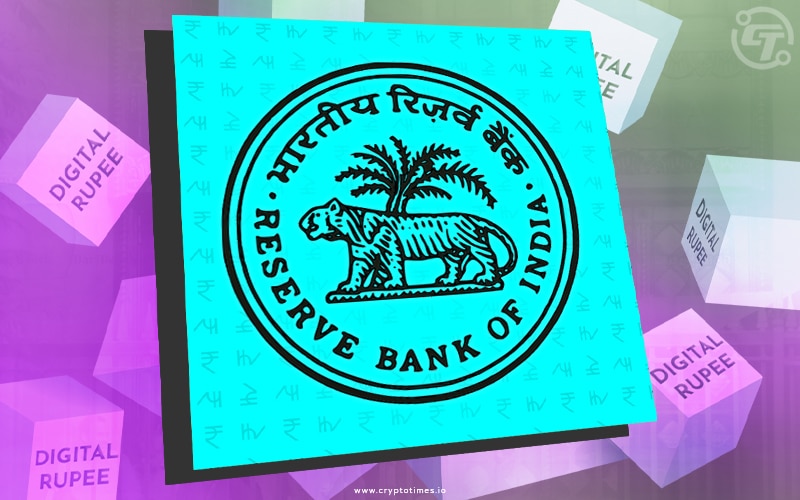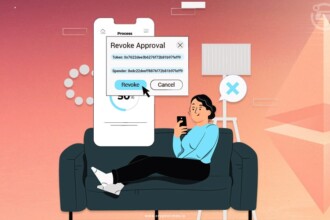An amazing transition will now take place in the world’s most populous democratic country India. A new chapter in the history of money is now certain, to begin with, RBI taking a plunge into Cryptocurrency. The new entrant as everybody knows is RBI cryptocurrency. This new RBI Digital currency will be called the Digital Rupee.
Countries are attempting to preserve fundamental parts of their existing banking and monetary systems while experimenting with new digital forms of money. The 2022 Indian Budget accepted the enrollment of CBDC and RBI digital currency.
“The Greatest Enemy of Knowledge is not Ignorance. It is the Illusion of Knowledge.”
– Stephen Hawking
Why has the government decided to implement CBDCs? What risks does moving to a new monetary system entail? What is a digital rupee, and how does it work?
All of these fundamental questions will be definitively answered, and you will have a thorough understanding of everything relevant once you have completed reading the article.
Cryptocurrencies, popularly known as digital currencies, are the hot new thing throughout the world, and India will launch its version of the same in the coming fiscal year, which would essentially mimic the popular real currency in digital form. The Reserve Bank of India will produce a digital currency dubbed the ‘Digital Rupee’ that will be fungible with conventional cash.
Prologue
The notion of “Central Bank Digital Currencies” (CBDC) has been explored and talked about for quite some time. Some associate Nobel Laureate James Tobin2, an American economist, with the invention of CBDCs in the 1980s, when he stated that Federal Reserve Banks in the United States should create a widely accessible medium with the convenience of deposits and the safety of money. However, it is only in the last decade that the concept of digital currency has received widespread attention from central banks, economists, and politicians.
Central banks have launched CBDCs (Central Bank Digital Currencies) backed by sovereigns, signifying a new type of central bank money, in response to the evolution of money from paper currency to account-based electronic money and now quickly proliferating programmable tokenized money.
CBDC was inspired by Bitcoin and other blockchain-based cryptocurrencies, but they vary from these virtual currencies and cryptocurrencies in that they are or will be issued by a government and have an official legal tender status. It is also a well-known economic idea in which the central bank allows citizens to open accounts with it, thereby offering a dependable and secure public savings or payment medium (“retail” or “general-purpose” CBDC).
What is a CBDC?
It’s critical to comprehend and appreciate what a CBDC is and how it works. It’s also essential to know what a CBDC is indeed not.
Currency is a type of money issued solely by the government in modern economies (or a central bank as its representative). It is both a liability of the issuing central bank (and sovereign) and a holding public asset. Currency is fiat money, which means it is legal tender. Although the most common form of currency is paper (or polymer), this may not be its most distinguishing feature.
According to the RBI website, CBDC is a digital form of legal money issued by a central bank. It functions in the same way as fiat money and can be swapped for fiat money in a one-to-one ratio. Its only difference is in its appearance.
CBDC is a digital or virtual currency, but it is not the same as the private virtual currencies that have sprouted up over the last decade. They are neither commodities nor claims on commodities because they have no intrinsic worth; some claims of them similar to gold appear to be purely speculative. They usually do not represent any person’s debt or liabilities, at least not the most popular ones these days. There is no such thing as an ISSUER when it comes to digital currencies.
The digital RMB, issued by China, was the first major economy to introduce a digital currency.
Republic of India’s CBDC Dalliance
In 2017, the Department of Economic Affairs of the Ministry of Finance (MoF) convened a high-level inter-ministerial committee (IMC) on the governance and use of virtual currencies in India, which advocated adopting Distributed Ledger Technology (DLT) to create a digital form of fiat currency. Despite the fact that cryptocurrencies have yet to receive official recognition, the RBI had begun preparing for future CBDC development.
The RBI launched a regulatory sandbox on December 16, 2020, to test next-generation technologies on cross-border payments and collect field test data as well as proof of advantages and hazards to the financial ecosystem. On January 29, 2021, the Government of India submitted a bill banning private cryptocurrency trading and investments while granting legal authority to the Reserve Bank of India to construct the CBDC, dubbed the “programmable digital rupee,” based on the experience acquired in dealing with UPI, IMPS and RTGS.
According to RBI Governor Shaktikanta Das, the central bank is currently debating whether to employ a centralised system or DLT.
On August 2, 2021, the Department of Financial Services, Ministry of Health and Family Welfare, and National Health Authority launched e-RUPI, a prepaid person-specific, purpose-specific e-voucher based on QR code or SMS string. It will serve as a forerunner by showing the shortcomings in the national digital payment infrastructure that must be addressed before CBDC can be implemented nationwide.
The Union Budget 2022 eventually announced the introduction of the Digital Rupee beginning in 2023.
What is the need for a CBDC?
This sudden focus on the adoption of CBDC has been justified by the RBI as:
- Faced with declining paper currency usage, central banks (such as Sweden) strive to popularise a more acceptable electronic form of currency.
- Countries that use a lot of physical currency and want to improve its issuing efficiency (like Germany, Japan, Denmark, or even the United States).
- Central banks are attempting to accommodate the public’s need for digital currencies, as evidenced by the growing use of private virtual currencies, while also avoiding the more harmful repercussions of such private currencies.
Why does CBDC have an upper hand?
A CBDC comes with a slew of benefits –
- CBDC payments are final, limiting the likelihood of risk settlement in the financial system.
- Interbank settlement will be obsolete thanks to CBDC. It’s similar to a UPI system in which CBDC is transferred instead of bank balances, as if it were cash.
- In terms of digital payment advances, India is at the forefront of the world. Its payment services are available 24 hours a day, seven days a week, and are primarily real-time for both retail and wholesale customers.
- CBDCs also benefit from India’s high currency-to-GDP ratio. The cost of printing, transporting, storing, and distributing currency can be whittled down to the point where CBDCs can replace large sums of cash.
The rationale for CBDC in emerging economies is thus apparent — CBDCs are desired not only for the benefits they produce in payment systems, but they may also be required to protect the general public in the context of volatile private Virtual Currencies. It’s worth mentioning that one of the key drivers of the shift to private digital currencies has been the need for privacy and anonymity.
Heads and Tails of the RBI Digital Currency
In addition to declaring a flat 30% tax on income from all virtual currencies such as Bitcoin, Finance Minister Nirmala Sitharaman mentioned the establishment of a Central Bank Digital currency, or the digital rupee, in her budget address for 2022-23.
Is the Digital Rupee Actual Money? Is It A Coin Or Is It A Piece Of Paper? Is that a wallet, or something else?
No, It’s A CBDC!
The digital rupee will be the same as the regular rupee, except it will be stored on the phone. XLRI Jamshedpur, one of the best management schools in India claimed that Digital rupee would make RBI the next innovation hub in India.
The Reserve Bank of India (RBI) has proposed changes to the Reserve Bank of India Act, 1934, that would allow it to introduce a Central Bank Digital Currency (CBDC) aka the Digital Rupee. The CBDC would be introduced by the RBI in FY23.
The RBI will be responsible for determining the supply of digital rupees as well as tracking how they are distributed to various individuals, thereby reducing the risk of black money. It would be a win-win situation, resolving a decade-long saga.
Shaktikanta Das, RBI governor, has stated that the Reserve Bank of India (RBI) will be in no “Jaldbaazee,” or carelessness, in launching its own digital currency.
The Global Experiments
CBDCs have already been addressed in a number of countries in various forms. For instance, the Bahamas’ central bank introduced a digital money- the Sand Dollar in 2020. A growing number of central banks worldwide are looking into the viability, utility, and value associated with digital currencies. China, Singapore, Japan and Sweden are all looking into the potential implications of such a tremendous shift.
China and Sweden are experimenting with a two-tiered CBDC, which could be the most popular model. The US Federal Reserve also produced a paper a few days ago that outlined the costs and benefits of launching a central bank-backed digital currency.
What exactly can you understand about the Digital currency?
“Blockchain and other technologies” will underpin the Reserve Bank of India’s Digital Rupee. The CBDC is a digital representation of the Indian rupee. When the RBI begins to circulate the digital rupee, ordinary people like you and me will be able to utilise it just like the regular rupee.
The digital rupee may resemble NEFT, IMPS, or digital wallets. It might be used for both wholesale and retail transactions. You might transfer it to another country as well as use it just like the normal paper currency for all purposes. Furthermore, the requirement of ATMs may reduce over time with the incorporation of digital currency.
Digital Rupee Vs Cryptocurrency
Cryptocurrency, both digital and physical, is here to stay. One of the key reasons for the RBI’s decision to introduce a digital rupee is that India does not want to be left behind in the virtual currency sweepstakes. You can’t simply deny it whether you like it or not.
You won’t need a bank account to transfer the digital rupee, unlike the normal rupee. Because it will be based on Blockchain, you will be able to send it directly to the recipient’s digital rupee wallet.
Because it will be backed by the government and have intrinsic value, a digital rupee will be fundamentally different from private cryptocurrencies like Bitcoin and Ethereum. Bitcoin and other cryptocurrencies have been dubbed “virtual assets” by the government, meaning that they would never become legal tender in the country.
Prime Minister Narendra Modi emphasised that the digital rupee could be swapped for cash, making online payments more safe and propelling the digital economy forward.
The Pros of RBI Digital Currency
- CBDCs are principally different from other types of digital payments in that they are final and eliminate financial system settlement risks.
- Transactions involving a CBDC would enable an even more real-time payment system without the need for a mediator. RBI here would just act as a guarantor.
- It will aid the government in printing fewer physical cash notes and reducing counterfeiting. It will strive to build a “more efficient and cost-effective currency management system.”
- Theoretically, the speed of transactions via blockchain technology could further boost economic activity or the velocity of the money supply.
The Cons of RBI Digital Currency
- The technological barrier of keeping and dealing in CBDC by retail consumers is, of course, a concern. The ability to store and use CBDCs is dependent on the availability of high-speed internet and significantly larger access to technology.
- The RBI is particularly concerned that lower levels of technology use in developing countries could limit CBDCs’ reach.
- The governor of the Reserve Bank of India, Shaktikanta Das, has expressed concern about the possibility of digital currency theft, emphasising the importance of counter-nefarious measures.
- In developed economies, where interest rates are at near zero, the risk of people rushing their money into digital currencies is real. This may not be a major problem for Indian banks, which continue to provide positive returns.
Will the Digital Rupee eventually supplant Cash?
There are no simple fixes to a development. The dominance of currency is unlikely to be challenged by a Digital Rupee. People will be hesitant to embrace India’s Digital Rupee unless it incorporates privacy and anonymity into its design.
As a result of the money trail left behind, the government will be able to track where and how you spent your digital rupee. Because the financial transactions of the persons involved can be disclosed and exploited, this will raise privacy concerns. Furthermore, because the digital currency would be issued directly by the RBI to the end-user, banks may have less money to lend.
In addition, when bank clients convert their deposits into digital rupee, the RBI will have to transfer these liabilities from banks’ records to its own balance sheet.
The Road Ahead
The introduction of a CBDC is no substitute for the underlying trust—a public good that allows money to grease the wheels of our economies—that has been created over decades. The adoption of a CBDC necessitates striking a precise balance between design and policy improvements.
It takes time and resources to get the design right, as well as ongoing learning from experience—including shared experiences across countries. To properly distribute CBDCs, construct e-wallets, add services, and push the boundaries of technology, strong relationships with private enterprises will be required in many circumstances.
However, policy considerations are also critical, including the creation of new legal frameworks, regulations, and case law. Furthermore, RBI stated that in a country like India, the distribution architecture, or whether the digital currency will be issued directly by the central bank or through commercial banks, must be carefully considered.
The Reserve Bank of India’s plan to introduce a Central Bank Digital Currency has caused concerns among banks. Banking players are concerned that the retail CBDC will cause a loss in deposits, a disruption in the debt market, a reduction in credit generation, and an influence on lending rates.
The success of a CBDC, if and when it is issued, will be determined by the level of trust it inspires. As a result, any CBDC that succeeds should continue to foster trust in central banks like it has always been.







